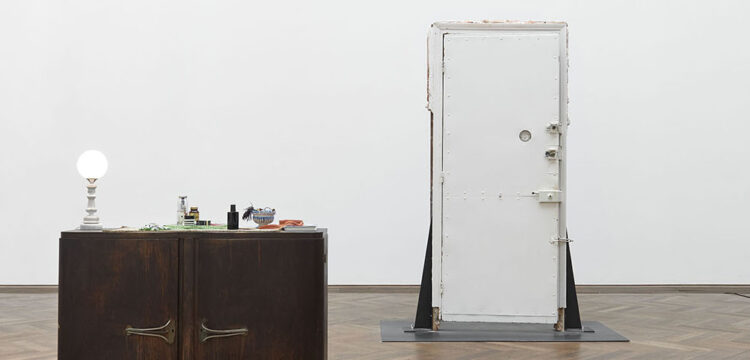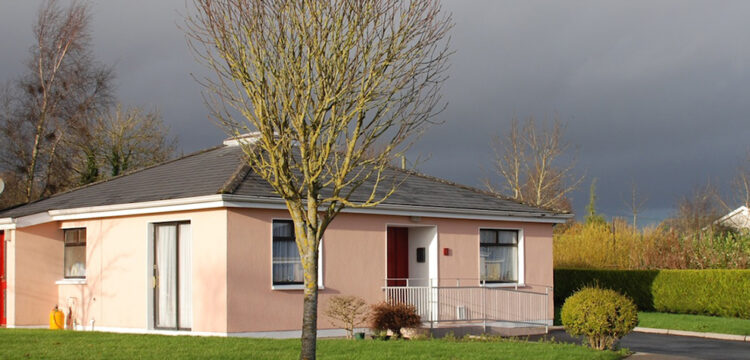Dust on Dance Floors
Harun Morrison in conversation with Cathy Wade on “Experiments with Everyday Objects” at Eastside Projects
Experiments with Everyday Objects is an exhibition that is both expansive and live, taking its title from a 1970s science book owned by Harun’s father, a former science teacher. The exhibition presents a collaborative body of work that connects visitors with politics, ruptures, economics and ecologies. The past and the near future of the city of Birmingham, salvaged objects from the now-demolished Eagle and Tun pub, the co-creation of work along the waterways of the Grand Union canal alongside evolving texts that outline everyday scenarios and our future access to clean air.
Cathy Wade: We are in an exhibition environment that is changing and shifting. On the wall of Eastside Projects you present a series of glasses that once would have been used at the Eagle and Tun pub, arranged in pitch order and filled with wine, slowly evaporating (while being continually topped up by the gallery team). Hanging from the ceiling is a speaker that plays Sarah Farmer’s recreation of UB40’s 1980s hit cover Red Red Wine. The glasses activated by her manipulating their rims to sing each note. Nearby HAPPY DAYS is chalked on a blackboard hung on wallpaper chosen by the pub’s former owners and a dartboard offers opportunities for competitive games. Would you talk about the elapsing time here; what you see being gained and lost in the environments you are drawing from?
Harun Morrison: The Eagle and Tun dates back to 1900, and despite the occasional period of closure, by the 1980s it was an informal but significant social hub for both Anti-Racism and Gay Rights campaigns. While the city grew and changed around it, venues such as Millennium Point (opened in 2002) and the expansion of Birmingham University, made the Eagle & Tun and The Woodsman (another nearby pub) relative throwbacks to another era. Birmingham Curzon Station, Grade 1 listed, originally opened in 1838, continues to loom in the landscape—and that listed status is all important. The degree to which a building is valued, is contingent on not only who’s doing the valuation, but the agency of those doing the valuation.
Although originally intended to be built into the HS2 plans (HS2 is a new high speed railway linking up London, the Midlands, the North and Scotland serving over 25 stations), following compulsory purchase, the pub was demolished. Prior to this, I bought a series of items from The Eagle and Tun including the aforementioned darts board and noticeboard. This act of purchase is a form of involvement in their narrative, the objects then move from a private property in a public context (ie. the pub’s ownership) to another public setting, that of the gallery. Although technically owned by me—they enter a commons of archival objects and memory, ideally the work would join a West Midlands public collection. It’s also a timely reminder that the word “pub” is short for “public house”, originally a building open to the public.
These objects staged in the gallery become a time capsule of sorts, one that is also broken and reconstituted by each observer. HAPPY DAYS for example is written by Kal, the former pub owner. In the midst of a sale and imminent destruction of his pub it takes on a bitter irony. It’s also the title of a Samuel Beckett play, opening up other associations and the statement itself can be evocative of happier times. The wine glasses also move us back and forth in time—referencing a music video that was partly filmed at the pub in 1980, while the recording of Sarah Farmer’s playing the glass harp took place in May 2021. The original glasses arranged in pitch order are filled to Sarah’s marks. Not only does it evaporate, but attracts flies, which becomes Beckettian in that detail. The evocation of pubs in the context of the lockdown also points to the way that so many bars, pubs, nightclubs and other social spaces, were inactivate, dust on dance floors rather than sweat. So there’s a collapse between the distinction between things that only exist in memory and those that still exist in the material world but cannot be accessed. Or to put it another way, when does a room behind a locked door become indistinguishable from fantasy? I’m thinking about virtuality beyond (or before) digitality.
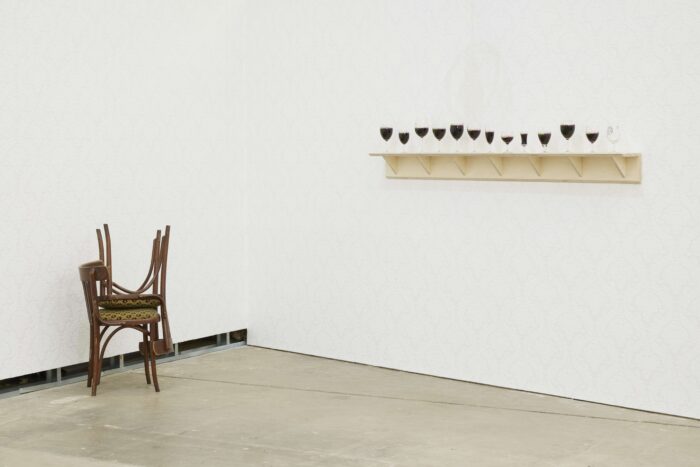
I continue to be struck by the pub chairs in the corner of the gallery, one placed on top of the other, they are the stragglers who don’t want to leave. They speak to the text Fictions Opens at Sunset (2020) which presents the near future development of Eastside Project’s current building as Fictions, a bar in a reimagined city in which the right to access to clean air is a primary concern. This text is a node for the exhibition, describing a journey from printing posters for the Right to Breathe movement at BAAAD Press (a student & staff-led publishing project run from Birmingham School of Art), to a congregation at the oxygen bar. This possible future occurs in a city designed for the car, with a legacy of urban planning that has been disputed over the decades.
The poster format of Fictions Closes at Sunset was first exhibited in an exhibition titled GEMES in Jakarta, Indonesia, curated by Riksa Afiaty. Due to Covid the show closed the day after it opened and so the story alongside other works in the group show were suspended both in time and this particular space. However, it was always conceived as an exercise in “designing through narrative”, the detailed story being the basis of a map for an intended installation in Eastside Projects that was never realized. Setting up an oxygen bar while UK hospitals running out of oxygen in the context of the Covid-19 pandemic would have been reckless. I still wanted that narrative there—as you say, it works as a connector between the boating elements and the items from the pub, the references to Nina Simone, who also sang about Bill “Bojangles” Robinson. Even the black snowman built with Ofelia Jarl Ortega in Skogskykogården, can be read as an omen of the environmental crisis that engulfs the protagonists in the story. The pub chairs then take on the dual role of being rescued objects from the past, and simultaneously props in a projected future evoked by this fiction set late in the 21st century.
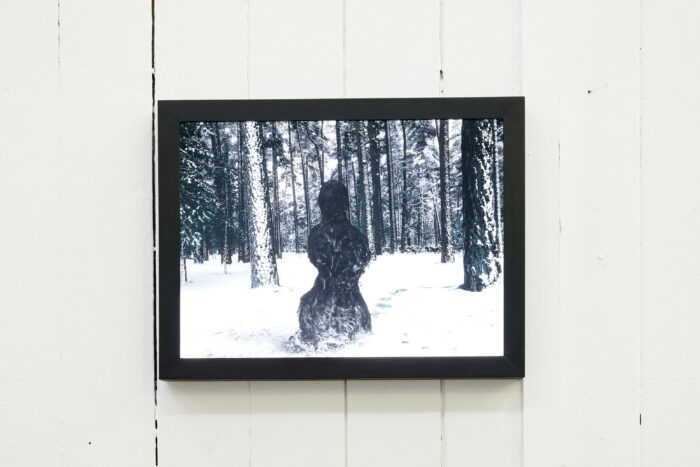
Two works in Everyday Objects actively question their status as artworks through their modes of use and existence. Knot Practice is a series of ropes tied into naval knots, skills you have learned and used as a boater. Stair Dance is a reconstruction of a stage prop used by dancer Bill “Bojangles”, its installation referencing the roles that objects can play in inhabiting the gallery and how they can also live outside of it.
Yes, in the case of the former, the questioning of status is raised in the name, which is also a pun, Knot Practice is of course a display of practicing of knots, but brought into the gallery acquires a non-practical function: to stimulate thought, metaphors around connectivity and so on. As I continue to develop these knot works, I’m also imagining them as potential support structures for other works, or ways of pointing to less noticeable aspects of the internal architecture of a given space. The notion of a support structure is also a useful bridge in reference to Stair Dance. The work is in two parts, a print comprising three stills from a YouTube video and the reconstruction of a dance prop designed by Bill Robinson himself. However, like the items from the pub, it is dormant, while trying to conjure a routine for a cabaret act that is no longer performed. It also exists as a stand-in for the kind of space that has been unable to open its doors for the last 18 months. The exhibition enables a temporary holding space for these oscillating works, which needs the speculative mind of the viewer to move between worlds of archival object (in case of the steps) to a “lost” 20th century minimalist sculpture to something else entirely.
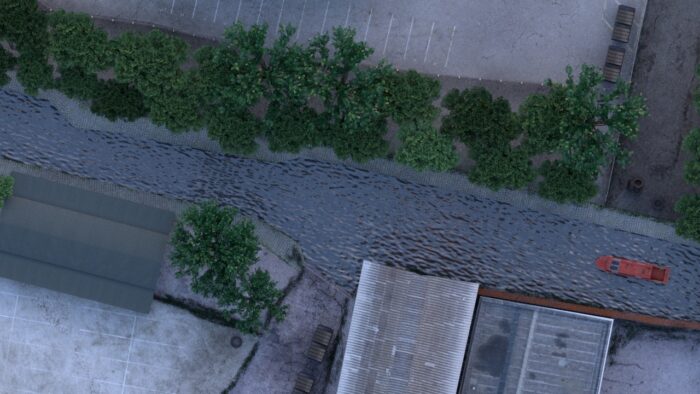
Your boat Zoar has been converted into a floating darkroom through which you have developed a series of pinhole photographs, works that capture the architectural landscapes you pass on the Grand Union canal. Zoar Returns: Narrowboat Simulator (2021–ongoing) is eloquent about this slippage through landscapes, the boat’s inner life accompanied by a number of commissioned scores. You have described boaters as being the beneficiaries of a defunct transport system for freight, the canals having fallen out of industrial use with the rise of the railways. Zoar offers a mode of travel that utilizes time differently, running in parallel to a railway that delivers its commuters at guaranteed points and times. How will this research into alternate modes of productivity continue to inform your work?
Even before the conversion of my boat into a pinhole camera and floating darkroom, there is another conversion, that of the boat from mute object into protagonist. This isn’t even by me—but comes with the act of individuation that naming implies. It’s in the culture of water navigation for vessels to have names, in a way it isn’t generally with cars. In the digital animation, Zoar Returns, you’ll notice the boat steers itself from St Pancras Basin without a handler at the tiller. That detail is also a nod to Rimbaud’s poem, The Drunken Boat, in which the boat narrates its own journey across the seas.
The co-presentation of the hand processed black and white images with the digital animation speaks to the condition of boating as straddling different times. In the context of London’s housing and rental market people are moving on to the water more and more, at the same time it’s a mode of living that hasn’t changed much since the 19th century. The conversion of the boat into a darkroom, using a red bike light as a dark room lamp, the smell of chemicals, the forty-minute exposures are all processes that defy the convenience of contemporary image making. Leaning into these non-digital techniques is not only exercising alternate modes of productivity, but also a space to think about the intentions behind any productivity. Slow-methodologies raise another difficult question: who can afford to be slow? Any societal change towards slowness is not separable from broader working practices. Pushing for a three-day weeks for all, the raising of minimum wage and the lowering of housing and other essential living costs are necessary to enable this.
The canal is a network that was primarily built for one function—trade. In the UK this is now redundant, but other functions, such as a living-space take their place. There are also canal-specific ecologies that have emerged, so that notion of redundancy is constantly relative. Zoar Returns is a small first step towards developing a simulation game that might address some of these questions with a player operating the boat as the primary protagonist. I also intend to keep working with the composers who have contributed scores (Cara Tolmie, Thiago Secundino & Vivian Caccuri, Samuel Rodgers and Lea Rüegg) to make this happen. I will continue to journey along the Grand Union producing more of the pinhole photographs as well as keeping a journal of these movements. In parallel I’m starting to find ways of theorizing and writing about boat-living in terms of shifting positionalities and water as support-structure for both things floating on it—as well as life within it. Some of these ideas will be taken forward in a forthcoming exhibition at the artist-led space Nieuwe Vide in Haarlem, Netherlands.
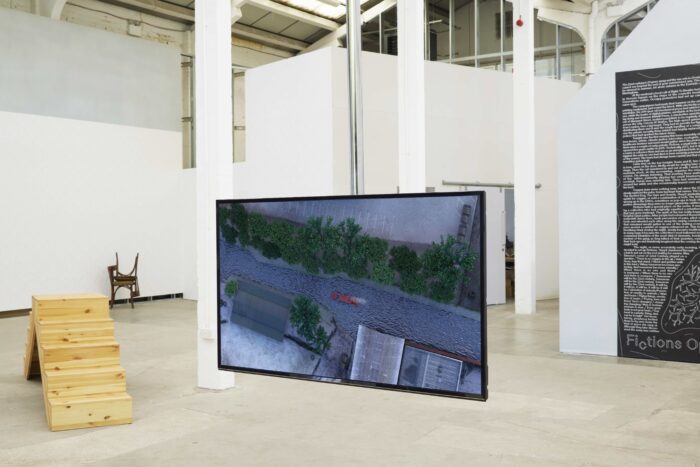
Photo by Stuart Whipps.
In Studio at Night you have edited forty clips of video of your studio window illuminated on a nearby wall. In this work, the space that you have occupied through a time of pandemic shows the passing of traffic and the shadows of objects on the windowsill. Occasionally, the blue flashing lights of an emergency vehicle fill the room with striations. There’s an inner and outer world here, the studio as a place for thought and the external environment that is moving to a different pace.
A studio can be many things depending on the moment; but over that period of making the short recordings in May 2020 (from which the video was edited a year later) it was a harbor and refuge. There are many plants along the window sill (the shadows of which you see in the video) I became devoted to watering them that summer, as the sole occupant of the building for several months. It’s easy to forget the sense of foreboding during that first lockdown, the destabilizing uncertainty… perhaps that’s what you’re touching upon when you mention the “inner world”? Studio at Night also compliments and returns to Jun’ichirō Tanizaki’s 1933 publication, In Praise of Shadows, which was a key point of reference for an exhibition I co-curated with Helen Walker and Lily Hall titled Their Wonderlands at mac Birmingham in 2011. Helen and I staged a building-wide performance during that exhibition, during which the art centre’s lights were turned off while excerpts of Tanizak’s text were read across multiple tannoys.
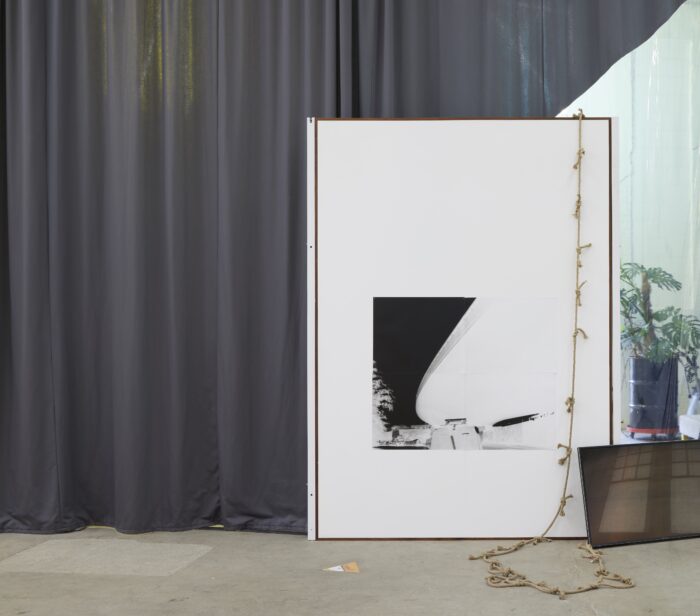
Photo by Stuart Whipps.
Your text, Nothing Special was performed on the 24th of June with Cindy Sissokho reciting the 365 statements that describe everyday situations ranging from attempting to use a phone with negligible battery power or seeing somebody else carrying the same book that you are reading, to somebody mispronouncing your name and not correcting them. The statements often describe interpersonal interactions that also touch on gender, perception and intimacy. As the work progressed, one line echoed or inverted another, which generated a compelling sense of moving from one body to the other (from speaker to listener or protagonist to participant). Cindy’s reading further embodied this transference, I’m curious as to how hearing the work live impacted you?
Thanks for articulating that. That reading was only the second time the text had been performed, the first was over a year ago at Artsdamin, Toynbee Studios, where it was read by Risa Horn. More recently it was read by Giulia Damiani at Centrale Fies. So it wasn’t the first time I’d heard it read live, I’d read it out loud to myself and also heard it read by others. Each reader brings their own voice, their identity, their inflections, tone and stresses which expand and enrich the text. During the second reading at Eastside, there were moments when Cindy’s voice was drowned out by the rain, the water for several minutes became the primary voice in the room. At times listening to Cindy I forgot the words were mine—and perhaps for those forty minutes they weren’t.
Strangely, it was through working on an Italian translation on the with Anna Santamauro that certain aspects of the work became clearer to me. Anna would question certain turns of phrase or sentence structures that are possible in English, but not natural to Italian. This required me to articulate what I’d been trying to do, in order for her to find an equivalent. So that process of working on a translation, especially when you do not know the language you are trying to translate to, so relying on a translator, puts you as a writer in a deeply self-reflexive position in relation to what you have written.
Throughout Experiments with Everyday Objects the networks and collaborations that have informed the work are made clear to audiences. So often the collective elements in the manufacture of artworks are removed from view. The skills that are brought in from others smoothed away until only a singular author remains. You are revealing a different reality here; in which it matters that Rose Nordin designed the poster for Fictions Opens at Sunset, that David Brunetti assisted you in the adaption of Zoar into a pinhole camera and that the former owners of the Eagle and Tun choose the wallpaper that covers the walls of the gallery. As an artist you foreground yourself in this exhibition as an active collaborator, could you talk about the importance of this within the gallery and for audiences?
I’ve always practiced collaboratively, primarily for 15 years with Helen Walker under the name They Are Here. Helen and I took our cue from precedents like General Idea from Toronto and New York’s Group Material, as well as performance groups like Uninvited Guests and Lone Twin; all of whom sought to decenter the age-old narrative of a single artist as a primary-creator. Although in the shorthand of the art world this is a “solo” show, I’m conscious that one is never “solo”. There are so many back-and-forths between friends who are also collaborators that inform the work—and I would never want to invisibilize that, while recognizing I remain a primary decision-maker. In the case of Fictions Opens at Sunset, Rose is a character in the narrative so it’s self-referential in that way, as are the other names mentioned like Sofia (Niazi) who I also share a studio with and has previously exhibited at Eastside Projects too. At the same time the story is set in 2081 so it’s unlikely anyone mentioned in the story, except the AI, will be alive by then.


